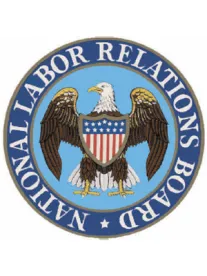Labor Day is upon us. It is fitting, therefore, to enter the weekend with another case that exemplifies the bizarre world of labor relations. Like the case of the human resource manager who turned on his employer, or the nurse who felt her union activity protected her in screaming confrontations, we continue to see new odd and amusing situations. This one involving Picket Line Etiquette.
In Int’l Assn of Bridge, Structural, Ornamental and Reinforcing Iron Workers Local 229, 365 NLRB No. 126 (August 30, 2017) the Board was confronted with a fairly simple situation, an allegation that a union was attempting to coerce a neutral employer in connection with a labor dispute. Not many of these secondary boycott cases get tried because if a union does it enough it can be faced with ever increasing NLRB oversight and sometimes even monetary damages. Here, the dispute centered over the construction of a parking garage. The charging party (“Neutral”) furnished and installed the reinforcing steel. Neutral was signatory with the union. The union had a dispute with another contractor (“Primary”) performing concrete work at the site.
The union began picketing the site in its dispute with Primary, the signs lawfully stated that Primary was “Not Paying Area Standard Wages.” The picketing did not have the desired impact and so the union’s business agent sent a series of texts to Neutral’s employees who were members of the union. One text had a symbol of a picket sign which stated “Friends Don’t Let Friends Cross Picket Lines.” The text also contained a link to a union webpage document entitled “Picket Line Etiquette” which stated
Labor’s first commandment:
“THOU SHALL NOT CROSS THE LINE”
A good Union member is EXTREMELY CAREFUL when confronted with a picket line situation
When a picket line is established on a job where you are working:
You MAY LEAVE. You DO NOT TALK.
You READ the PICKET SIGN as you leave
You DO NOT hang around near the job
You know that ONCE A PICKET LINE IS ESTABLISHED, your Business Agents and other Union Officials
are legally gagged and handcuffed from giving advice pertaining to THAT JOB. they can only tell you if the
Picket Line is AUTHORIZED.
A good union member knows their rights:
You have the right not to work behind ANY Picket Line
You have the right to decide for yourself whether to walk off a job being picketed.
You understand that YOUR TRADE may be UNDER ATTACK next and you would want everyone’s support.
…
BE PREPARED AHEAD OF TIME HOW TO REACT TO PICKET LINES
Under the Section 8(b)(4)(i)(B) of the Act a violation occurs by picketing or activity that induces or encourages the employees of a secondary employer to cease doing business with the primary employer. The Board has held that in evaluating whether inducement or encouragement occurs the statements made by union agents directly to Neutral employees if such statements would reasonably understood by the employees to be a “signal” or “request” to stop working.
There was very little question the text messages and the Picket Line Etiquette document was inducement or encouragement to engage in a work stoppage. Indeed, the union stipulated to that fact. So, why contest the case? Because the union claimed the Act could not be enforced for three reasons.
First, under First Amendment law the Act’s prohibition of appeals to employees is too broad. The ALJ noted that these “arguments, although eloquently presented, are rejected…it must be found that the [Supreme] Court” in 1951 found that outlawing secondary pressure does not violate the First Amendment. The union also asserted that Section 8(c) of the Act protects the union agent’s requests because there was no promise of benefit or threat of reprisal. The ALJ summarily rejected this argument.
Second, the union claimed that the secondary boycott provisions of the Act violated the Thirteenth Amendment of the United States Constitution. That amendment abolished slavery and involuntary servitude in 1865. The ALJ found, “[o]n this record, however, no evidence of involuntary servitude warranting application of the Thirteenth Amendment exists.” It is interesting to wonder whether such a record could exist when evaluating statements.
Third, as if the previous defenses were not a reach, the union shot for the moon and claimed its communications were protected by the Religious Freedom Restoration Act, which provides that the government may not “substantially burden” the free exercise of religion. The RFPA does not require the exercise of any particular religion only that the claimant engage in “any exercise of religion.” The union claimed its efforts to protect work for its members was a sincerely held belief that could not be abridged. The ALJ gave short shrift to this argument as well, noting that the union had failed to show the Act posed a “substantial burden.”
The Board adopted the ALJ’s finding of a violation without comment.
Of course, employers constantly make the free speech arguments, especially when defending against he NLRB’s handbook allegations and other efforts by the Board to regulate what is said in the workplace. So,in that respect the union’s arguments were not that far off the mark. This may be the first time that any party, employer or union, has made an involuntary servitude argument against the NLRB. The same goes for the alleged encroachment on religious freedom. Those arguments are one (two, actually) for the books. It is good to see that “Picket Line Etiquette” exists. In the immortal words of Emily Post, “Nothing is less important than which fork you use. Etiquette is the science of living. It embraces everything. It is ethics. It is honor.”



 />i
/>i

